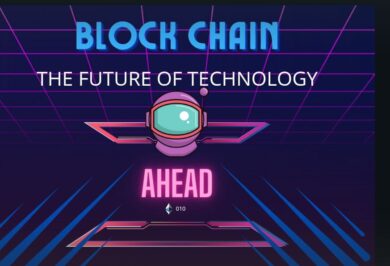The world of data management is constantly evolving, with new technologies emerging to better serve the needs of businesses, governments, and individuals. One such technology that has garnered a lot of attention in recent years is blockchain. Originally developed to support the cryptocurrency Bitcoin, blockchain has since found a variety of use cases beyond finance, including data management.
In this blog post, we will explore what blockchain is, how it works, and why it is considered by many to be the future of data management.
What is Blockchain?
At its most basic level, blockchain is a distributed ledger that records transactions in a secure, transparent, and tamper-proof manner. A distributed ledger is simply a database that is spread across a network of computers, rather than being stored on a single central server.
What makes blockchain different from other distributed ledgers is its use of cryptographic algorithms to ensure the integrity of the data. Each block in the chain contains a cryptographic hash of the previous block, as well as a timestamp and a record of the transaction that has taken place. Once a block is added to the chain, it cannot be altered or deleted without also altering all subsequent blocks in the chain, making it virtually impossible to tamper with the data.
How Does Blockchain Work?
To understand how blockchain works, let’s take a closer look at the three key components of the technology:
- Nodes: A node is any device that is connected to the blockchain network. This can be a computer, a smartphone, or any other internet-connected device.
- Blocks: A block is a collection of data that is added to the blockchain. This data can include anything from financial transactions to healthcare records to voting records.
- Consensus: Consensus is the process by which the blockchain network agrees on the validity of a new block. This process is achieved through a series of complex mathematical algorithms that ensure that all nodes on the network are in agreement about the state of the ledger.
When a new block is added to the blockchain, it must be validated by the other nodes on the network. Once a consensus has been reached, the block is added to the chain and cannot be altered or deleted without also altering all subsequent blocks.
Why is Blockchain the Future of Data Management?
- Security: The most obvious advantage of blockchain for data management is its security. Because the data is distributed across a network of computers, it is virtually impossible to hack or tamper with the data. Additionally, because each block in the chain contains a cryptographic hash of the previous block, any attempt to alter the data would be immediately detected by the other nodes on the network.
- Transparency: Another advantage of blockchain is its transparency. Because the ledger is distributed and accessible to anyone on the network, there is no need for a central authority to oversee the data. This makes it easier for businesses, governments, and individuals to trust the data, as they can verify its authenticity and accuracy themselves.
- Efficiency: Blockchain can also be more efficient than traditional data management systems. Because the data is stored on a distributed ledger, there is no need for a central database to be maintained. This can lead to faster transaction processing times and reduced costs.
- Decentralization: Blockchain is also decentralized, meaning that there is no central authority or single point of failure. This can make the system more resilient to cyberattacks and other types of disruptions.
- Data Privacy: Blockchain can also provide a more secure way to manage sensitive data, such as personal health records or financial information. Because the data is stored on a distributed ledger, there is no need for a central authority to have access to the data. This can help protect individuals’ privacy and prevent data breaches











